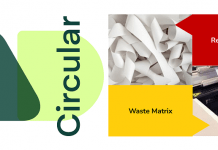
There are limits to resilience. It works for a year, and it can work for 22 months for many of us. But the indications are, that we are now in for a difficult year. The emergence of the Omicron variant has put off the economic recovery (the normal movement or dynamic of the market) by another four months – one cannot expect even the newest normal till May 2022.
The Indian label industry was resilient in the first year of the pandemic. It plugged into the essential goods supply chain of food and pharma – and got into action in a couple of weeks after the first lockdown in end-March 2020. Then came the good days for short-run label printing and the realization that digital label printing makes sense in the pandemic era. However, there are limits to resilience.
As we wrote in our last issue, digital label presses did well in the past two years, with a 33% expansion of the accumulated installed base of the previous years. However, the import of narrow web flexo label presses stalled in the main. At the same time there is considerable overcapacity as well as caution in the industry. In the current financial year to end-March 2022, the imported press installs are likely to be less than a dozen.
Not good news for Brussels
It will be amazing if more than 50 Indian label converters (out of the usual 250 to 350) manage to visit the Labelexpo in Brussels in end-April (26 to 29 April). This, despite Brussels being a favorite outing for the industry. One that is desperate to go somewhere nice, and to do something halfway constructive at company expense. The pandemic situation is such that the label press manufacturer Nilpeter has already announced its withdrawal from all shows this year. And we have unconfirmed reports that Gallus has also pulled out the Brussels event.
Amongst the 15 or 20 Indian manufacturers of presses and consumables that normally take part in Labelexpo Brussels, we already know of two who are not going – and at this point, it seems likely that most will drop out. Among the label printers, there are mixed views on visiting Brussels. Some are keen to go, and others who have already invested strongly in the pandemic feel that it’s a time to keep their heads down. “This is not the time to burn money,” one of them says.
The dangerous year
The raw material prices and logistical dislocations (also prices) have meant that label stock prices in India have risen by 20 to 25% in the past two years of the pandemic. This has put pressure on the cash flow of the label converters and also on the label stock suppliers. With the inordinate rise in the price of water-based adhesives (in comparison to hot-melt adhesives), many of the smaller local labelstock producers have closed shop. An additional increase comes on the face stock papers imported from Europe that now carry a prohibitive fuel surcharge of as much as US$ 400 (approximately Rs 29,910) on a ton of paper that costs US$ 1,000 or 1,100 (approximately Rs 74,775 or 82,252).
The bigger suppliers of pressure sensitive labelstocks have no choice but to supply with increased credit. The vertically integrated and more systematic label converters who make their label stock are in a relatively happy position. However, the increased prices of inputs and materials together with hyper-competition amongst label converters is going to aggravate the cash-flow situation. This will ultimately hurt the suppliers also.
The entry cost to the label industry has come down with several Indian suppliers of quality narrow web flexo presses and slitting and rewinding equipment. Established converters fear that the lower cost of entry in an industry already burdened with overcapacity will increase hyper-competition. They fear new players fighting for market share and cutting corners on inputs, including the import of label material stock lots.
Degradation of product quality
The middle-level label players with turnovers in the Rs 15 to 25 crore range (US$ 2 to 3 million) are likely to feel the heat says one converter. In a major industrial cluster in the country, two or three new label converters come to light each month. This increases pressure on the more organized and regulation-compliant players not only from price competition but also on the cost of retaining talent. On top of the recent years’ 25% increase in raw material prices, the cost of human resources in the industry is expected to go up by 10-12% this year.
Finally, the brand owners are also suffering from increases in the prices of their raw materials. They are looking to hold down costs by moving to cheaper materials for both packaging and labels. This can mean going to smaller converters who may be more amenable to mix and match stock lots. Or alternately, putting pressure on their long-time reliable suppliers to use inferior face stocks and inks. Brand owners are also looking at migration to shrink sleeves.
The past two years have brought out the resilience among the label converters and strengthened local manufacture of equipment and materials. The supply chains of consumer products have been bolstered by the reliable supply of packaging and labels.
Nevertheless, the global supply chain is in danger of faltering in the new normal. While any kind of normal implies a decrease in discomfort, all the signs indicate another year of difficulty ahead. The looming third year of the pandemic is taking a toll.








